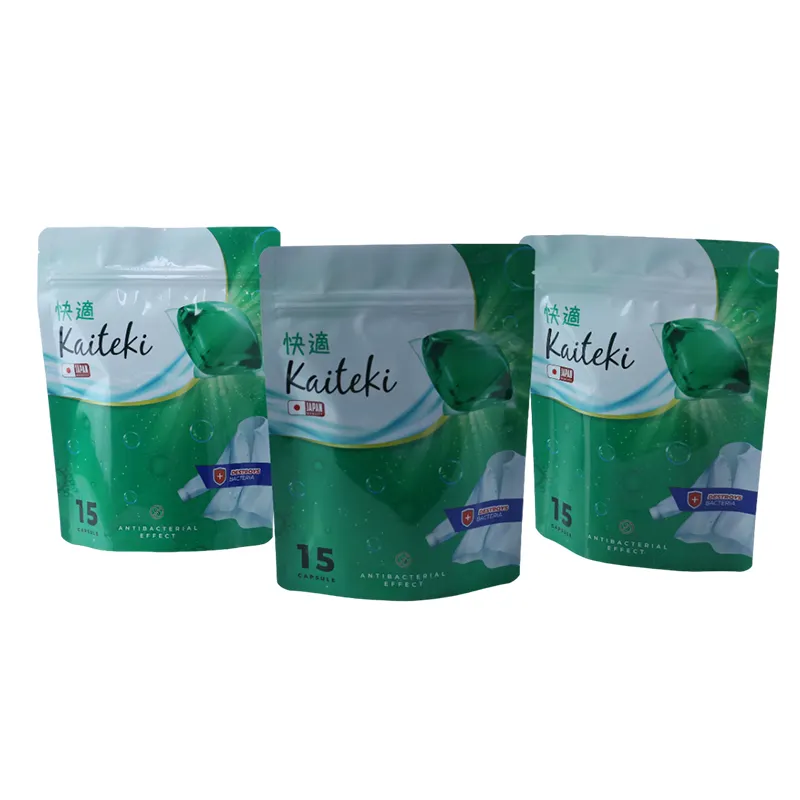Packaging in the chemical sector is more than just containment—it plays a crucial role in preserving product quality, ensuring safety, and complying with regulatory standards. This is especially important for daily chemicals, which include a wide range of products from detergents to cosmetics. Selecting the right packing types for these items directly affects shelf life, customer satisfaction, and environmental impact.
Unlike food or electronics, daily chemicals often contain reactive or sensitive ingredients. They require packaging solutions that resist corrosion, maintain product stability, and are easy to handle. The diversity of daily chemical formulations—from liquids to powders—also demands a flexible approach to packing types.
Plastic and glass bottles are among the most common packing types for liquid daily chemicals such as shampoos, lotions, and detergents. These containers are often chosen for their durability, ease of labeling, and dispensing features like pumps or caps. Jars are also popular for creams and pastes, offering a wide opening for easy access.
For smaller quantities or single-use daily chemical products, tubes and sachets are ideal. They are cost-effective, lightweight, and allow precise usage. This type of packaging is widely used in personal care products like facial cleansers and travel-size toiletries.
Flexible pouches are increasingly popular as an eco-friendly alternative. Refill pouches for hand soaps or cleaning liquids reduce the use of rigid plastics and are easy to store. Multi-layered pouches offer barrier protection against light and moisture, making them a reliable packing type for sensitive chemicals.
One of the primary functions of packaging is to protect the chemical contents from external elements such as light, air, and moisture. The right packing types prevent contamination and reduce product degradation. For example, UV-protective plastic is often used for light-sensitive daily chemicals like hair serums.
Packaging should be designed for ease of use, especially in households. Flip-top caps, spray nozzles, and ergonomic shapes improve user experience. Moreover, clear labeling and measurement indicators can enhance safety and reduce waste during usage.
For manufacturers, cost control is crucial. Selecting packing types that are affordable yet durable can lead to significant savings. Bulk packaging, such as large refill containers, reduces material usage and transportation costs. This is particularly relevant for industrial-scale distribution of daily chemicals.
Sustainability is reshaping how daily chemicals are packaged. Brands are moving toward recyclable plastics, biodegradable films, and refillable systems. This shift in packing types aligns with growing consumer demand for eco-conscious choices.
Technological advancements have introduced smart packaging with features like tamper-evident seals, QR codes for tracking, and even color-changing indicators for freshness. These additions not only improve safety but also elevate brand trust.
Packaging aesthetics are also evolving. Clean, minimal designs with clear information appeal to modern consumers. Transparent packaging that reveals the product can instill confidence and help users assess quality before purchase.

Packaging for daily chemicals must adhere to regulations set by health and safety authorities. This includes material safety, labeling requirements, and child-resistant features for hazardous substances. Non-compliance can lead to legal issues and product recalls.
Beyond functionality, packing types serve as a visual representation of the brand. Custom shapes, colors, and embossing can make a product stand out on the shelf. Many brands in the daily chemical space invest in packaging design as a core part of their marketing strategy.
Efficient transportation and storage are critical for chemical products. Stackable, lightweight, and leak-proof packing types are preferred to minimize damage and maximize shelf space. Materials should withstand varying temperatures and handling pressures during shipping.
As sustainability becomes mainstream, refill stations for daily chemicals are emerging in retail settings. Consumers bring their own containers, reducing waste. This trend demands packaging that is durable, easy to refill, and compliant with hygiene standards.
Future packing types may include smart labels that track product usage or offer reordering options via apps. Such features can provide convenience to consumers while helping brands collect usage data for better inventory planning.
A circular approach to packaging—where materials are reused, recycled, or composted—is guiding innovation. Companies are exploring mono-material packaging, which is easier to recycle than multi-layered versions. This transition also pushes suppliers to redesign packing types from the ground up.
The chemical nature of the product should guide material choice. For instance, acidic or alkaline formulas require packaging resistant to corrosion.
A perfect packing type balances protection, user convenience, and production cost. High-end materials may not always be necessary for basic products.
Consumer expectations vary by region. While Western markets may favor minimalistic and sustainable options, other regions might prioritize affordability or brand prestige.
Choose packing types that are scalable and readily available from suppliers. This ensures smooth production, especially during high-demand seasons.
Bottles with flip-top caps or pumps are widely used due to their convenience and sealing capability.
They are ideal for liquids like detergents and hand soaps, but not for all types, especially those requiring precise dispensing.
Proper packing types protect against air, light, and moisture, all of which can degrade the chemical composition over time.
Yes, many biodegradable and recyclable materials now offer comparable strength and durability to conventional plastics.